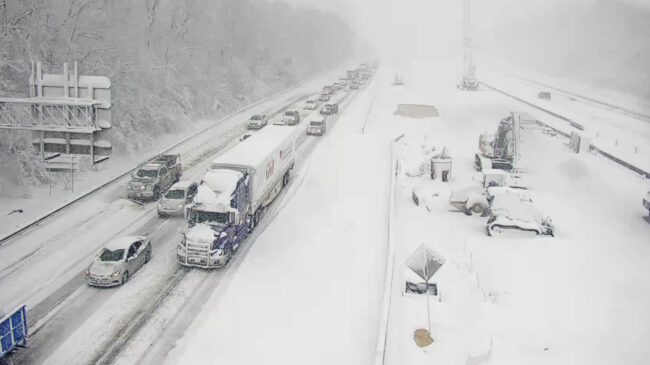On Jan. 4, The Washington Post ran a detailed article about the travails of hundreds of motorists stranded for up to 24 hours on 48 miles of snow-bound I-95 south of Washington, DC. The Post wrote:
Interstate 95 in Virginia reopened Tuesday evening after a winter storm paralyzed vehicles for 48 miles south of Washington, leaving hundreds of motorists stranded — many for more than 24 hours without food or water — as temperatures fell into the teens. The storm, which dropped about 12 inches of snow in the area beginning Monday morning, quickly overwhelmed snow-removal crews on a hilly stretch of interstate, slowing traffic before crippling a section of the East Coast’s busiest highway already known for gridlock.
Two days later, Chicago television channel WREX ran a story on that region’s toll road headlined: “Illinois Tollway Begins Zero Weather Road Patrols to Help Assist Drivers During Dangerous Cold.”
The Illinois Tollway is deploying around-the-clock Zero Weather Road Patrols to more quickly locate and assist customers who become stranded on the Tollway system during the cold weather and dangerous wind chills forecast to continue into the weekend. The Illinois Tollway typically operates Zero Weather Road Patrols whenever temperatures or sustained wind chills fall below zero degrees to bolster the roadway assistance already provided by the Illinois Tollway’s Highway Emergency Lane Patrol (H.E.L.P.) trucks and the Illinois State Police.
While there are numerous differences, mitigating factors and both of these might be special cases, the contrasts between the preparedness and management of state-run I-95 and the Illinois Tollway do shed light on broad and important transportation policy issues. For example, those who drive I-95 and all the other 48,000 miles of the Interstate Highway System are typically referred to as “users.” By contrast, those who drive on the Illinois Tollway, the Indiana Toll Road, and the Pennsylvania Turnpike are referred to as “customers.”
This is not merely semantics.
Those who choose to drive on toll roads (many of which are part of the Interstate system) pay tolls with the expectation of being treated as customers. They are provided with emergency service patrols and service plazas offering numerous food and drink choices, gasoline and diesel fuel stations, and (increasingly) electric vehicle charging facilities. None of those services are available on non-tolled Interstates.
Studies have found that toll roads, on average, are better-maintained than comparable non-tolled highways. That is partly because a toll road provider knows that motorists and truckers expect smooth, well-maintained highways in exchange for their tolls. But it’s also because the investors who provide the capital—mostly bondholders—insist (via clauses in the bond agreements) that revenues be spent first on proper maintenance, even before debt service on the bonds.
By contrast, non-tolled highways in many states often suffer from what is referred to as “deferred maintenance.” The operator, the state transportation department, knows what maintenance is needed to keep each highway in good shape, but its budget is set by the legislature. All too often, since many state legislators prefer to have ribbon-cutting opportunities in his or her district, too much of annual state transportation budgets are allocated to new projects while needed maintenance is deferred or gets what money is leftover.
This lack of proper stewardship is an ongoing problem for American highways. All too often, decisions on funding highway projects are based on the potential political benefits to politicians rather than on the economic benefits they’ll deliver to highway users. And that leads to spending a considerable fraction of the annual highway budget on projects whose economic benefits are less than their costs.
Highways should be understood and managed as utility businesses, comparable to electric, gas, water, and telecommunications utilities. Utilities have owners and customers, and the nexus between them is the user charges they pay.
By contrast, in the U.S. highway sector, the owner is the state government, the operator is the state transportation department, and the users send their gas tax money, not to the operator, but to the state treasury, where it gets doled out by the legislature after being heavily shaped by politics. Imagine how poor the quality of our telecommunications and electricity systems would be if they were run under such arrangements.
Toll roads are one kind of highway business, comparable to a municipal electric or water utility. A small but growing number of toll roads have been developed by private firms investing private capital, under long-term franchises from state or local governments. This is analogous to investor-owned electric utilities that nearly always operate under long-term franchises, typically anging from 50-to-99 years. Current examples include the Chicago Skyway, the Indiana Toll Road, and express toll lane projects in Texas and Virginia.
It would be great if America’s major highways all had proper stewardship, top-notch maintenance, and a direct customer-provider relationship with the motorists and truckers who drive on them. Their customers would especially appreciate that relationship in times like the recent winter storms.

